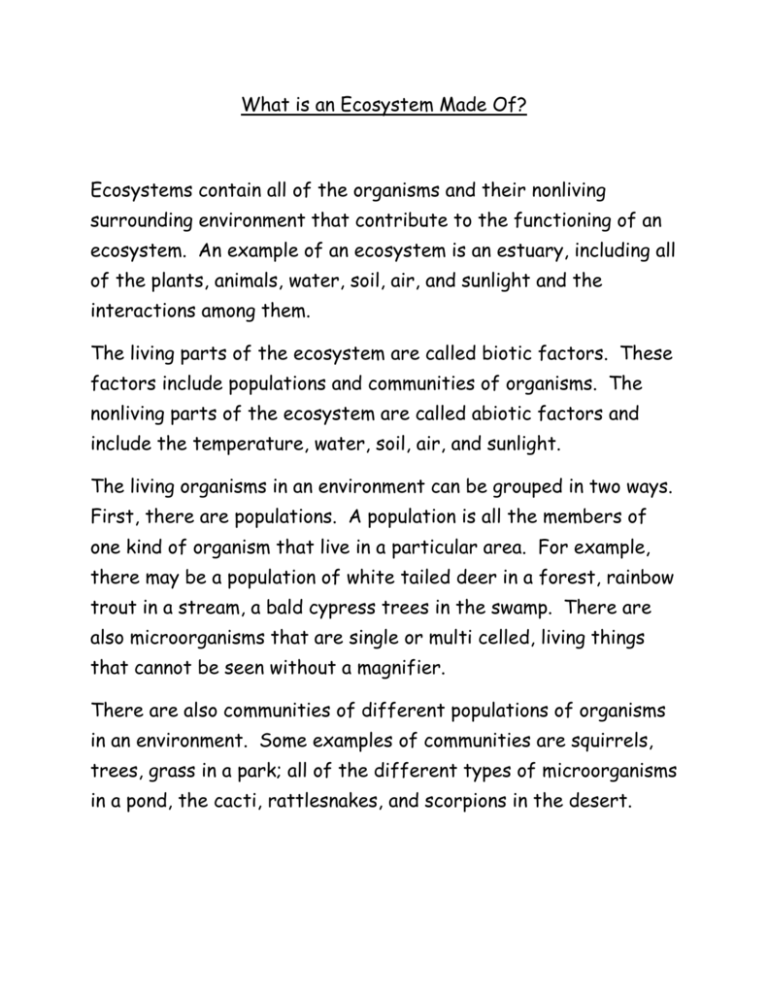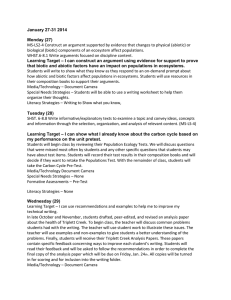Factors and Organization of Ecosystems
advertisement

What is an Ecosystem Made Of? Ecosystems contain all of the organisms and their nonliving surrounding environment that contribute to the functioning of an ecosystem. An example of an ecosystem is an estuary, including all of the plants, animals, water, soil, air, and sunlight and the interactions among them. The living parts of the ecosystem are called biotic factors. These factors include populations and communities of organisms. The nonliving parts of the ecosystem are called abiotic factors and include the temperature, water, soil, air, and sunlight. The living organisms in an environment can be grouped in two ways. First, there are populations. A population is all the members of one kind of organism that live in a particular area. For example, there may be a population of white tailed deer in a forest, rainbow trout in a stream, a bald cypress trees in the swamp. There are also microorganisms that are single or multi celled, living things that cannot be seen without a magnifier. There are also communities of different populations of organisms in an environment. Some examples of communities are squirrels, trees, grass in a park; all of the different types of microorganisms in a pond, the cacti, rattlesnakes, and scorpions in the desert. Biotic and Abiotic Factors Reflection Slip: Answer the following questions in complete sentences: 1. What is the difference between biotic and abiotic factors? 2. Are abiotic factors dead or were they never alive? 3. What is the difference between a population and a community? What makes up an ecosystem? Biotic Factors Abiotic Factors Populations Communities Microorganisms What is it? Give an example











